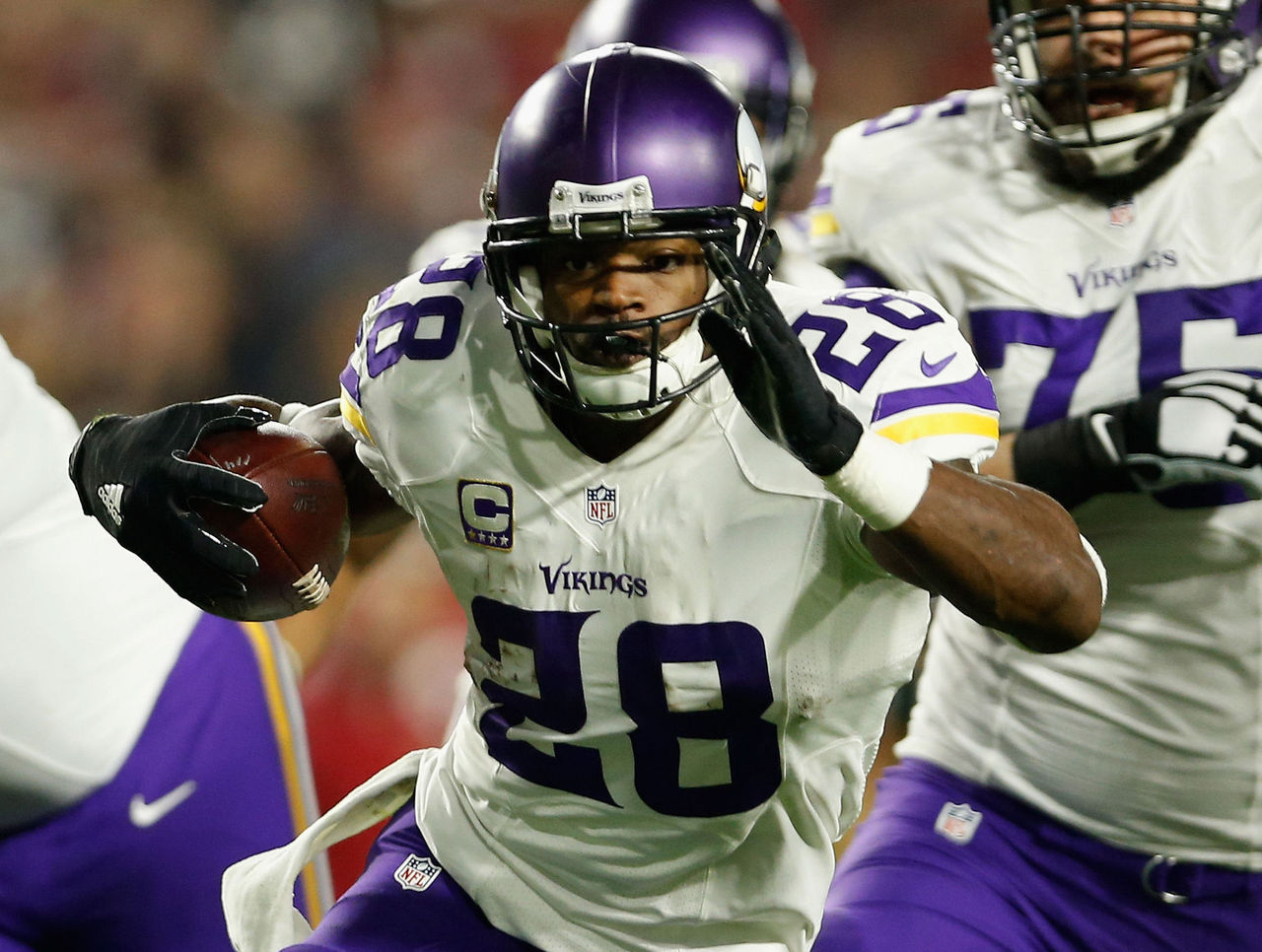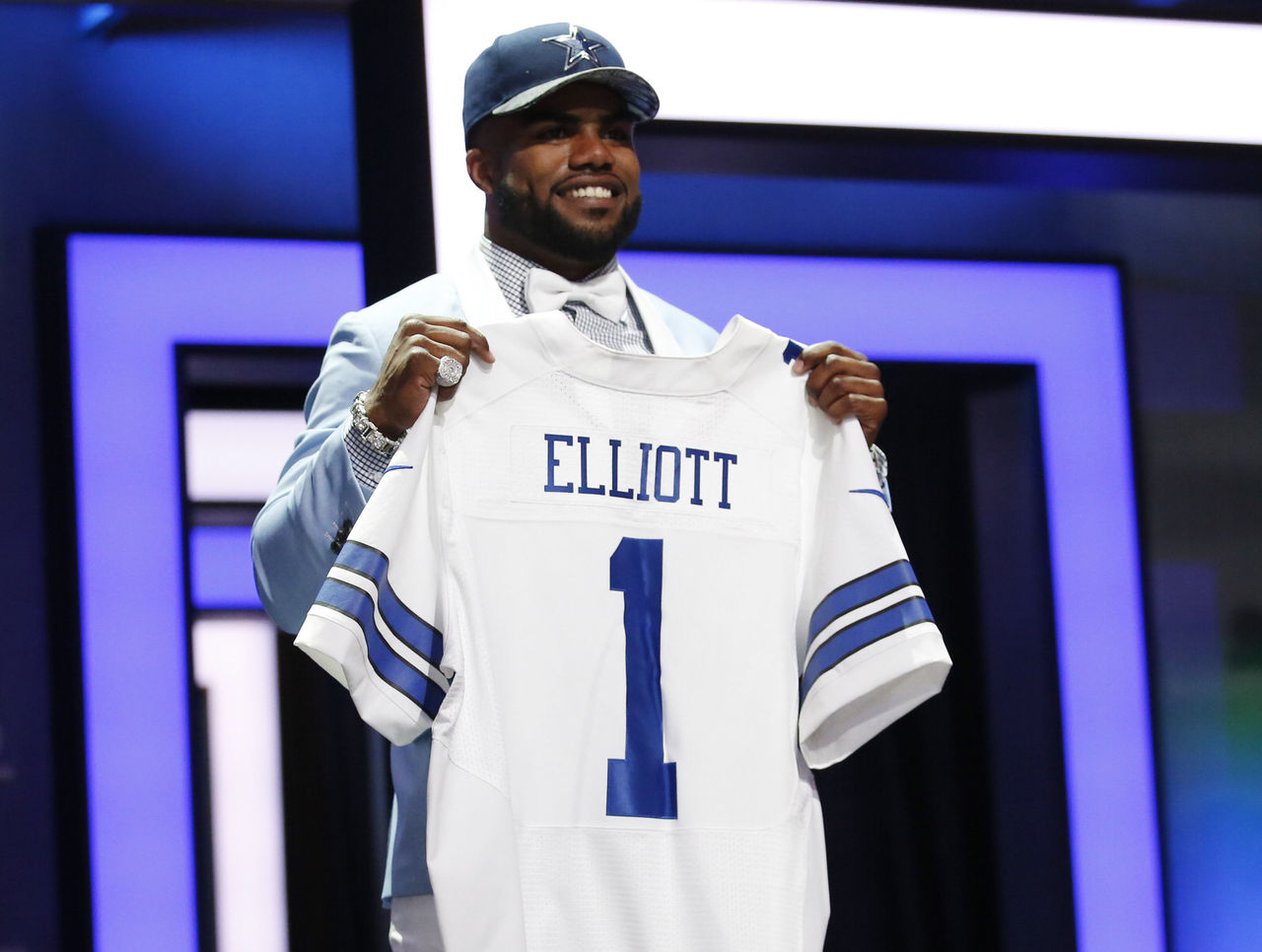What did we learn from 2015 drafts?
Hindsight is easy. We can look back at the choices that went well and act like we knew what we were doing all along. We can also look back and see how much the fantasy football landscape has changed in just a year.
Reflection is important. Recognizing what went right and what went wrong in prior seasons can help form the general strategy going forward. It is an element of draft preparation, though not the lone angle to consider.
Average draft position (ADP) data courtesy of FantasyFootballCalculator and based on 12-team leagues with standard scoring.

Clinging to RB superiority
Looking back, the transition into a receiver-dominant NFL was not as apparent even a year ago. The top five picks, and seven of the top 10, were running backs in most 2015 standard leagues. Conventional wisdom suggested your first pick should be a running back and your second pick would be a receiver. That, or you might want to go with a pair of running backs to kick it off.
Pittsburgh Steelers WR Antonio Brown was the WR drafted on average and was the sixth player off the board. Even in PPR leagues, Minnesota Vikings RB Adrian Peterson was the consensus No. 1 pick. 2015 may now be remembered as the end of running back dominance atop fantasy drafts.
Imagine, for a moment, being the person who selected Denver Broncos RB CJ Anderson with the seventh overall pick when Atlanta Falcons WR Julio Jones was still available. It happened, and there's probably nothing more emblematic of the shift to favoring WRs than that.

Mistakes were made (and always will be)
In addition to overrating the power of the running back and Anderson being a top-10 pick, QBs were an extremely volatile bunch. Peyton Manning was the third QB taken and that ended poorly. Meanwhile, Cam Newton wasn't a consensus top-10 QB!
So many early-round picks turned out to be disasters. Running backs like Le'Veon Bell, Eddie Lacy, Jamaal Charles and DeMarco Murray, along with wide receiver Dez Bryant and quarterback Andrew Luck, were either first-round picks or close to it; none of them returned appropriate value whether due to injury, poor usage within a team's scheme, or general ineffectiveness.
Anyone whose fantasy team performed below draft expectations can look back at the results and see where it went wrong. They can see where they zigged when they should have zagged. It's one thing when late-round picks go awry, but it's a different kind of painful when it all goes off the rails so early.
One area that should have been avoided until very late, if at all, was the Green Bay Packers receiving game. With Jordy Nelson out for the season, it was Randall Cobb this and Jeff Janis that with a sprinkle of Davante Adams for good measure. Somehow, the most valuable Packers receiver relative to ADP was James Jones.
Basically, unless you got lucky and took Adrian Peterson or Antonio Brown in the first round, it was an uphill battle.

Pockets of value
It happens every year, but by the time the new season comes around, the new sensations of the year prior are firmly affixed in their new positions of stature. While there is a hint of doubt hovering around Atlanta Falcons RB Devonta Freeman, he was a waiver wire addition in some cases, or taken extremely late. He has already returned more value than was anticipated.
The best value came in the mid-to-late rounds, especially at tight end. Cincinnati Bengals TE Tyler Eifert was taken outside the top 12 at the position. He's seventh this year after hauling in 13 TD receptions.
Similarly, waiting on a QB, as seen when referring to mistakes, proved wise. It still came down to making the right choice among several options, like taking Larry Fitzgerald instead of the similarly-drafted Roddy White, but that's where leagues would be won.
While Fitzgerald could have been taken later, better WR value could have been found in the fifth round, which is where the Jets' Brandon Marshall and the Dolphins' Jarvis Landry went.

What could have been (and what might be)
Waiting until later at quarterback and tight end, while dedicating the first couple of picks to wide receivers, could have yielded a top-two selection of Jones and Giants star Odell Beckham Jr. It would have been a gamble after that, as the running back pool would have been fairly dire, but it would have been the best one-two punch at receiver that you won't possibly get this year.
But that's the easy way out. The trends seemed to suggest that last year would have been a wise one for WRs to be selected earlier, and the bulk of early-round RBs went bust. The thing is, a sea change has widely begun. What 2015 proved is that going against the grain, being bold without really reaching, is what worked.
This is why a player like Dallas Cowboys rookie RB Ezekiel Elliott might make a savvy first-round selection. Like we recently profiled here, Elliott's upside could be as a big-time runner with pass-catching upside, even though the sample size is small. Building around his potential and grabbing high volume receivers like the aforementioned Landry could be the way.
It's not just about looking at what went right or what went wrong and modeling your draft appropriately to reflect that. Every year is different. You can play it safe or you can take some leaps early and fill in the blanks later.